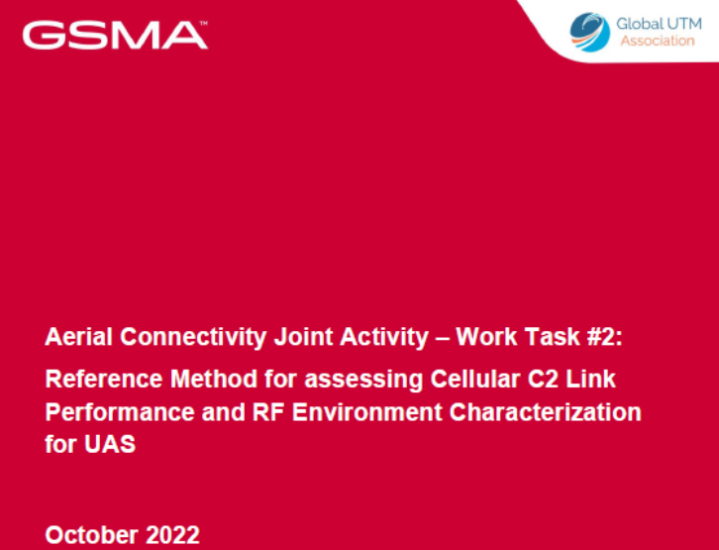The Global Uncrewed Aerial Traffic Management (UTM) Association (GUTMA) and mobile network agency GSMA has released a new reference method for assessing cellular C2 link performance and RF environment characterisation for Uncrewed Aerial Systems (UAS). The document, which is the product of the Aerial Connectivity Joint Activity (ACJA), aims at supporting beyond visual line of sight (BVLOS) operations at scale by characterising the performances of the cellular link for different operations and in different situations and geographical environments.
The Reference Method provides objective information about feasible technical capabilities to authorities, depending on the considered environment, and standardization bodies for defining safety-related cellular link performance standards and technical-operational requirements and recommendations. Practically, this means that a Reference Method includes: 1) the aerial and ground measurement of the cellular RF environment 2) measurement of the C2 link performance between a particular drone type and its control station (CS) 3) processes and procedures for conducting flight measurement operations in a standardized fashion.
Drone developers, operators, and regulators may also benefit from having a Reference Method for assessing the performance of a particular drone type’s cellular C2 link across varying operational environments throughout the lifespan of the drone system.
ACJA is a collaboration initiative between GUTMA and GSMA. Its goal is to promote the exchange between the aviation and cellular communities and the related Standard Development Organisations (SDOs) to generate harmonized standards and avoid incompatibilities. Find out more about the initiative here.
For more information visit:
www.gutma.org




